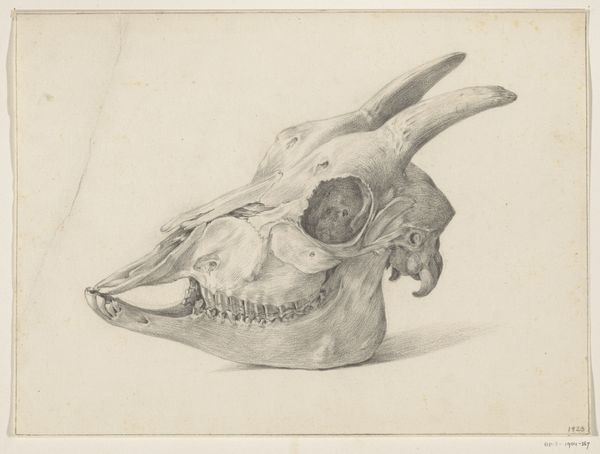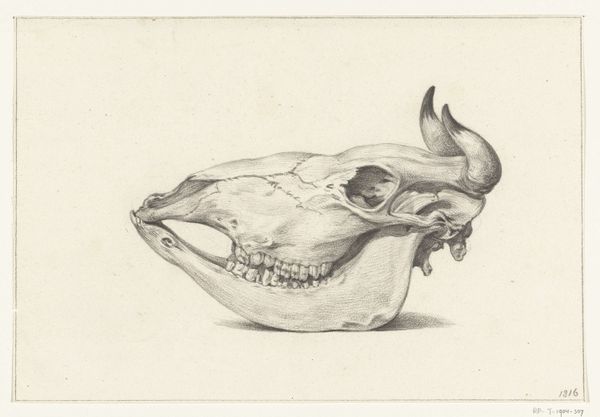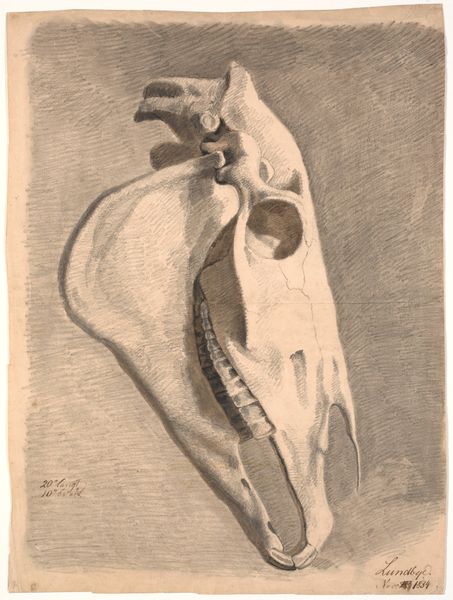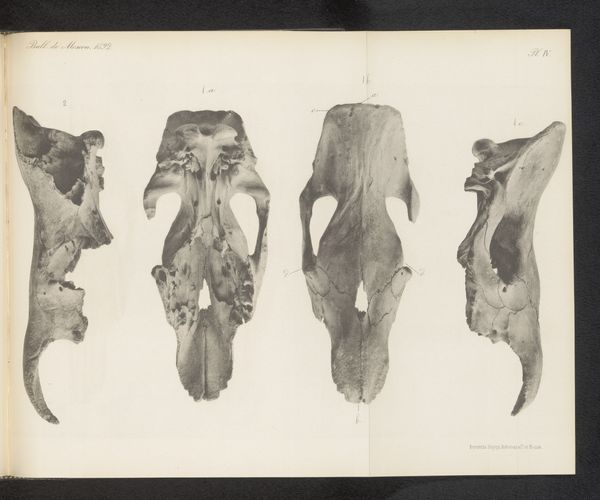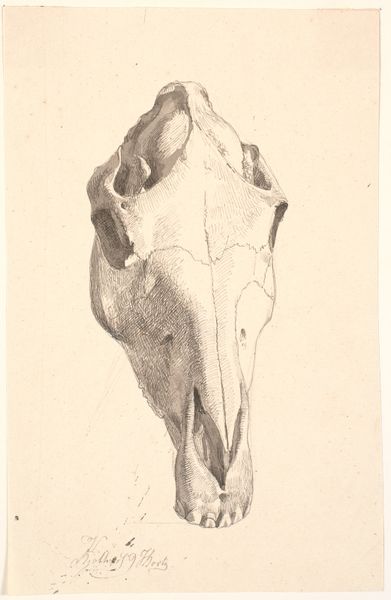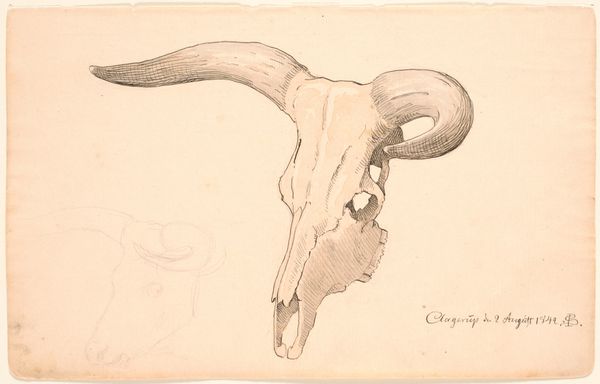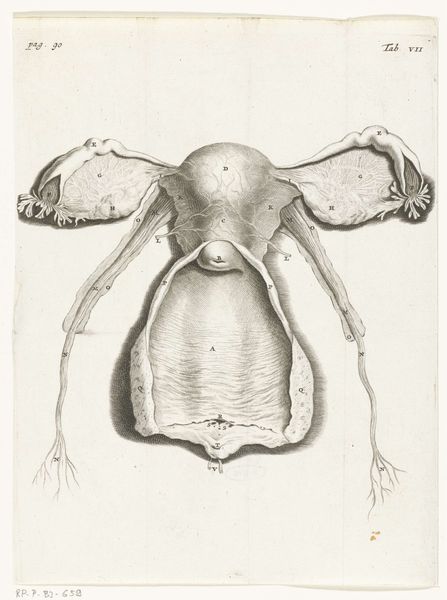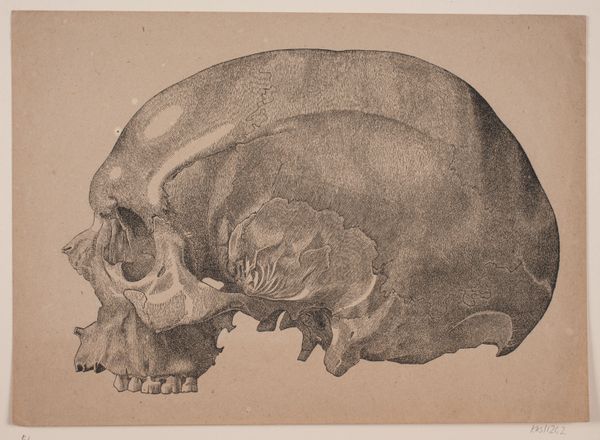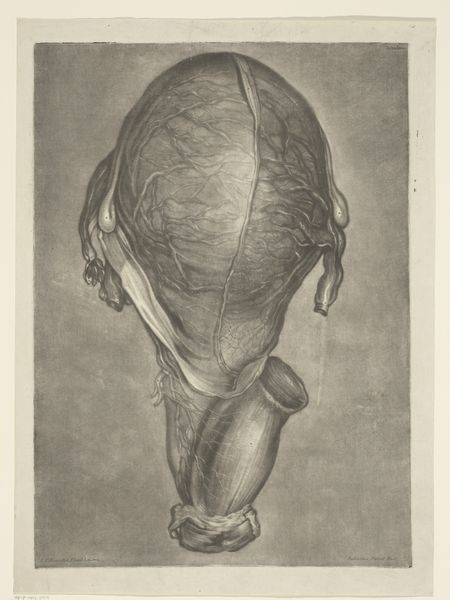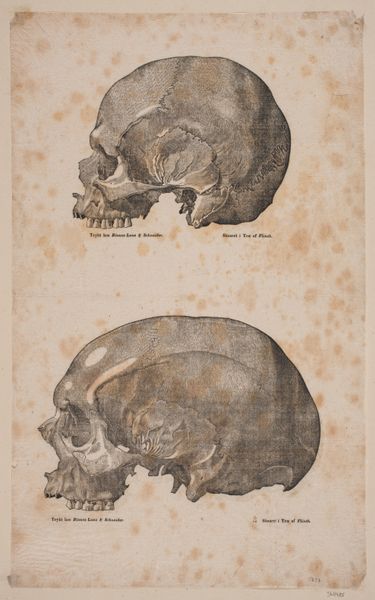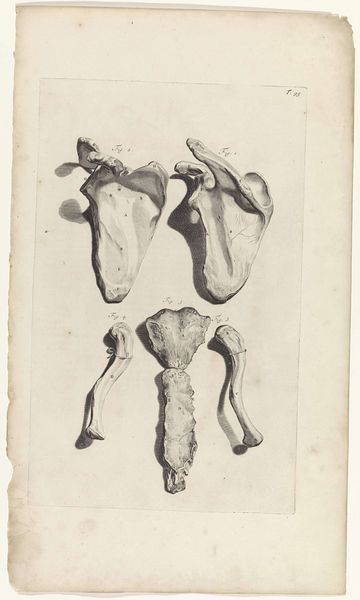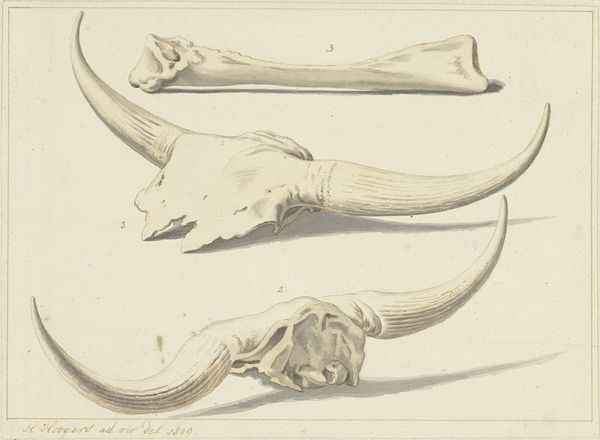
drawing, print, woodcut, engraving
#
pencil drawn
#
drawing
# print
#
classical-realism
#
form
#
vanitas
#
pencil drawing
#
woodcut
#
chiaroscuro
#
line
#
genre-painting
#
history-painting
#
academic-art
#
engraving
#
realism
Dimensions: 93 mm (height) x 112 mm (width) (bladmaal)
Curator: This hauntingly beautiful piece is called "Dyrekranie med horn," which translates to "Animal Skull with Horns." It was created sometime between 1849 and 1879. Editor: The texture jumps out immediately! There's an almost tactile quality to the lines, making the bone look both fragile and enduring. Curator: Precisely. Its classical realism is conveyed through precise engraving techniques, isn't it? Notice how the engraver uses varied line weights and cross-hatching to achieve a sense of depth and chiaroscuro, almost sculpting the form from the blank page. The lines build the mass, the form, in its most academic reading. Editor: Yes, but let's also consider the labor involved in such intricate work. The process itself—the countless hours spent etching and refining—adds another layer of meaning, doesn't it? This skull was observed but the print also became its own material thing, through intense labor and skill, like a highly wrought tool, ready to serve some educative or moral aim. Curator: Certainly. One can view the meticulousness as elevating it from mere study to art. There is this quality of *vanitas* to it too, don't you think? A meditation on form, but also on the temporality that the physical material of both bone and the engraving plate implies. Editor: The *vanitas* theme absolutely resonates, particularly when we think of the paper it is printed on, a mass produced product, connecting high art with more commonplace practices. The materiality and manufacture suggests that while the subject deals with death, the artwork engages with broader social processes. Curator: Well said. The artist utilizes a fairly standard technique in service of a complex formal exercise, drawing attention to the very artifice involved. The bones articulate, they exist as marks, strokes, and a sophisticated build up of line and tone that describes depth in a flattened plane. Editor: The economic factors also impact interpretation; considering access to tools, training, and materials opens up possibilities for further reading that simply regarding aesthetic appreciation overlooks. Curator: Indeed, by considering its formal elegance as a result of specific historical and material circumstances we see more than just the beauty but also the context within which that beauty was wrought. Editor: An engaging exploration of life and death then, made manifest through exacting skill.
Comments
No comments
Be the first to comment and join the conversation on the ultimate creative platform.
